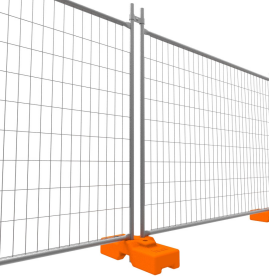-
+86 15030157877
-
sales@galvanizedmetalmesh.com
Aug . 06, 2024 11:11 Back to list
Durable Steel Grating Solutions for Industrial Flooring in Manufacturing Facilities and Factories
Steel Grating for Floor Factories An Essential Choice for Safety and Efficiency
In modern industrial settings, safety and efficiency are paramount concerns. One of the most crucial elements that contribute to both these factors is the flooring system. Among various flooring options, steel grating has emerged as a preferred choice, especially in factory environments. This article explores the benefits and applications of steel grating for floor factories, highlighting why it remains an essential solution.
What is Steel Grating?
Steel grating is a type of flooring made from various metal alloys that are fabricated into grid-like patterns. The most common materials used are carbon steel, stainless steel, and aluminum. The design typically consists of a series of parallel bars spaced apart, providing both support and an open area that allows for drainage, air circulation, and light penetration. This makes steel grating an ideal option for factory floors, where performance and safety standards are high.
Benefits of Steel Grating in Factory Settings
1. Safety First Safety is a significant concern in any factory environment. Steel grating offers a slip-resistant surface that reduces the likelihood of accidents. The open design allows for the quick drainage of spills and other liquids, minimizing the risks associated with slippery floors. Additionally, its strength ensures that it can withstand heavy loads, making it suitable for areas that require durable flooring.
2. Enhanced Visibility and Airflow The grid structure of steel grating allows for maximum visibility and airflow, essential features in a factory setting. Increased light penetration can lead to a more productive environment, as good visibility is crucial for workers operating heavy machinery. Airflow promotes a healthier work atmosphere, reducing the accumulation of heat and moisture that can lead to mold and mildew.
3. Cost-Effectiveness Although the initial investment in steel grating may be higher than traditional concrete or tile floors, its long-term durability and low maintenance costs make it a more economical choice over time. Steel grating can withstand harsh chemicals commonly found in factories without deteriorating, saving money on repairs and replacements.
steel grating for floor factories

4. Versatility Steel grating can be customized to meet the specific needs of different factory environments. It comes in various sizes, load ratings, and designs, allowing for tailored solutions that cater to the unique requirements of any workspace. Additionally, it can be used in a variety of applications, from walkways and platforms to drainage systems.
5. Eco-Friendly Option In an age where sustainability is increasingly important, steel grating stands out as a more eco-friendly flooring option. Made from recyclable materials, steel grating can be repurposed at the end of its life cycle, minimizing waste and environmental impact.
Applications of Steel Grating in Factories
Steel grating is utilized across various sectors, including food processing, manufacturing, automotive, and chemical industries. In food processing plants, for instance, the ease of cleaning and resistance to corrosion make steel grating ideal for hygienic environments. In chemical factories, its durability against harsh substances ensures longevity and safety.
Moreover, the installation of steel grating is relatively straightforward compared to concrete alternatives, allowing for quick project completion without extensive downtime for factory operations. This agility in installation means that companies can maintain productivity while implementing upgrades to their facility.
Conclusion
In conclusion, steel grating is an indispensable choice for flooring in factory environments, offering safety, durability, and efficiency. Its ability to provide a slip-resistant surface, allow for drainage, and promote air circulation makes it ideal for a variety of industrial applications. As factories continue to evolve, the adoption of steel grating is set to increase, reinforcing its role as a foundational element in safe and productive industrial operations.
-
Custom & Wholesale Perforated Metal Mesh Sheets - Factory Direct
NewsAug.14,2025
-
Premium Rib Lath for Durable Stucco & Plaster Systems
NewsAug.13,2025
-
3D Curved Welded Mesh Fence: Enhanced Security & Durability
NewsAug.12,2025
-
Custom Crimped Wire Mesh | High Quality & Wholesale Supply
NewsAug.11,2025
-
Heavy-Duty Stackable Storage Cages – Secure & Space-Saving
NewsAug.10,2025
-
Stainless Steel Angle Factories | Top Suppliers & Manufacturers
NewsAug.09,2025



